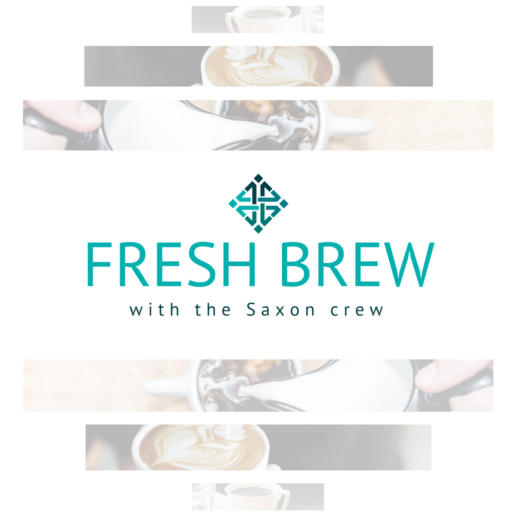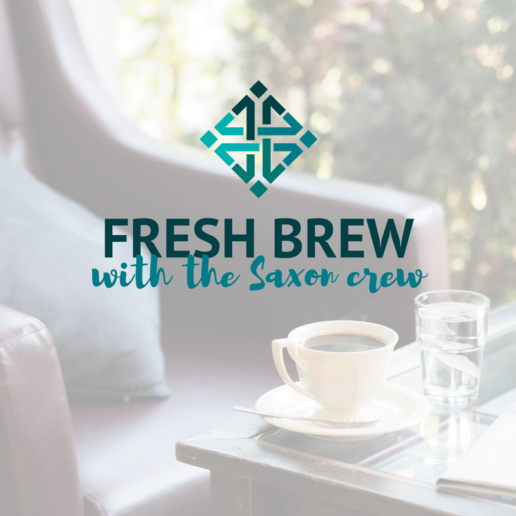The benefits and pitfalls of remote hiring
Hiring employees remotely can have several benefits, but can also come with several pitfalls. In the midst of the coronavirus pandemic, employers have turned to virtual meetings for several things which also includes virtual interviews. Read this blog post to learn more.
Companies operating remotely over the past few months have found that hiring, onboarding and training can be done virtually, in a way that’s effective and efficient, thanks to today’s technology.
Since stay-at-home orders went into effect, 51% of respondents have interviewed a candidate remotely, and 42% have extended an offer remotely, according to a report from Addison Group, a national staffing and recruiting firm.
And remote hiring could be here to stay, as 21% of hiring managers believe virtual interviewing will be a permanent benefit moving forward. This can help expand a company’s candidate pool, as people who can’t get time off from work or have problems with childcare can still interview for the available position, says Peg Buchenroth, SVP of human resources at Addison Group.
“For larger teams with several interview rounds, it’s not uncommon for candidates to have more than three interviews ahead of an offer,” she says. “The widespread use of virtual interviews in initial interviewing rounds accelerates the process, saves the hiring organization excess expense and shows respect toward a candidate’s time.”
But the technology can also be the reason an interview goes wrong.
“A technical error could reduce face-to-face time or reflect poorly on the party responsible for the technical difficulties,” Buchenroth says. “Ensure any tools you need, such as Skype or Zoom, are properly set up and working well before the interview.”
The rapid transition to remote hiring routines isn’t always easy — for 56% of hiring managers, this is the first time they performed hiring activities remotely, the Addison Group report finds. For job candidates and employers who are used to, and more comfortable with, in-person interviews, adapting to the new normal of remote hiring can be both stressful and frustrating.
“I think there are some positions where an in-person interview can be hard to replicate, especially if that position is going to require a lot of in-person interaction at some point,” says Candace Nicolls, SVP of people and workplace at Snagajob, a staffing firm for hourly and essential workers. “Sometimes that can be hard to assess remotely unless you have a clearly thought out process.”
With many candidates having kids at home, or not having reliable internet access, it’s also important that employers are compassionate and understanding of potential issues that the work-from-home environment can impose, Nicolls says. Managers should take time to explain the process, and leave room for technical difficulties.
“I think the advantages [of remote hiring] far outweigh the disadvantages,” she says. “But when there are circumstances that people just aren’t able to control, that's actually a real opportunity for hiring managers to show empathy, and it can be a really powerful way to show your brand through all of this.”
Having a standardized remote interviewing process, where all candidates are given the same set of questions, can also help improve diversity and decrease adverse impact and bias, Nicolls says.
“Asking objective questions will help you assess candidates based on a criteria that everybody’s already decided on,” she says. “When people are interviewing face-to-face, those initial first impressions can override some of the candidate answers. We know that relying on that gut instinct when someone walks through the door isn't the best way to make hiring decisions.”
Additionally, remote hiring can be a solution to the safety concerns brought on by COVID-19. Candidates do not have to worry about taking physical safety precautions while entering an office, and employers can keep themselves and their employees safe too, says Kevin Parker, CEO of HireVue, a software company that provides pre-employment assessment and video interview tools.
“As you think about all the challenges that we face, whether in the office or not, having long lines of people coming to the office for interviews — with all those risks associated to both the candidate and the hiring company — has jumped up pretty high on the list of concerns,” Parker says. “Companies are having to re-imagine that in a more virtual way.“
With all the benefits of remote hiring, there’s reason to believe it will be the new normal after the pandemic settles, Parker says.
“We almost made a 10-year leap in 90 days in terms of the way we think about work, remote work and hiring and access to talent,” he says. “The employers are looking more broadly than they ever had before, and recognize that they can find good people almost anywhere. And candidates are recognizing that if they can work from home 20 miles from the office, they can work from home 200 or 500 miles away from the office.”
SOURCE: Nedlund, E. (24 June 2020) "The benefits and pitfalls of remote hiring" (Web Blog Post). Retrieved from https://www.employeebenefitadviser.com/news/the-benefits-and-pitfalls-of-remote-hiring
How to Overcome Your Fear of Making Mistakes
During the time of the coronavirus pandemic, there could have been a rise of fear due to each scenario that has gone on around society. Many may feel as if they fear the missteps which may lead to making mistakes. Read this blog post for helpful tips on how to overcome fear.
The Covid-19 crisis and its fallout — including recession, layoffs, and uneven economic pain — as well as recent protests over police brutality and demands for racial justice have presented many of us with challenges that we’ve not encountered before. The high-stakes and unfamiliar nature of these situations have left many people feeling fearful of missteps. No one can reduce mistakes to zero, but you can learn to harness your drive to prevent them and channel it into better decision making. Use these tips to become a more effective worrier.
Don’t be afraid or ashamed of your fear.
Our culture glorifies fearlessness. The traditional image of a leader is one who is smart, tough, and unafraid. But fear, like any emotion, has an evolutionary purpose and upside. Your concern about making mistakes is there to remind you that we’re in a challenging situation. A cautious leader has value. This is especially true in times like these. So don’t get caught up in ruminating: “I shouldn’t be so fearful.”
Don’t be ashamed or afraid of your fear of making mistakes and don’t interpret it as evidence that you’re an indecisive leader, or not bold, not visionary. If you have a natural tendency to be prevention-focused, channel it to be bold and visionary! (If you struggle to believe this, identify leaders who have done just that by figuring out how to prevent disasters.)
Use emotional agility skills.
Fear of mistakes can paralyze people. Emotional agility skills are an antidote to this paralysis. This process starts with labeling your thoughts and feelings, such as “I feel anxious I’m not going to be able to control my customers enough to keep my staff safe.” Stating your fears out loud helps diffuse them. It’s like turning the light on in a dark room. Next comes accepting reality. For example, “I understand that people will not always behave in ideal ways.” List off every truth you need to accept. Then comes acting your values. Let’s say one of your highest values is conscientiousness. How might that value apply in this situation? For example, it might involve making sure your employees all have masks that fit them well or feel comfortable airing any grievances they have. Identify your five most important values related to decision-making in a crisis. Then ask yourself how each of those is relevant to the important choices you face.
Repeat this process for each of your fears. It will help you tolerate the fact that we sometimes need to act when the best course of action isn’t clear and avoid the common anxiety trap whereby people try to reduce uncertainty to zero.
Focus on your processes.
Worrying can help you make better decisions if you do it effectively. Most people don’t. When you worry, it should be solutions-focused, not just perseverating on the presence of a threat. Direct your worry towards behaviors that will realistically reduce the chances of failure.
We can control systems, not outcomes. What are your systems and processes for avoiding making mistakes? Direct your worries into answering questions like these: Is the data you’re relying on reliable? What are the limitations of it? How do your systems help prevent groupthink? What procedures do you have in place to help you see your blind spots? How do you ensure that you hear valuable perspectives from underrepresented stakeholders? What are your processes for being alerted to a problem quickly and rectifying it if a decision has unexpected consequences?
Broaden your thinking.
When we’re scared of making a mistake, our thinking can narrow around that particular scenario. Imagine you’re out walking at night. You’re worried about tripping, so you keep looking down at your feet. Next thing you know you’ve walked into a lamp post. Or, imagine the person who is scared of flying. They drive everywhere, even though driving is objectively more dangerous. When you open the aperture, it can help you see your greatest fears in the broader context of all the other threats out there. This can help you get a better perspective on what you fear the most.
It might seem illogical that you could reduce your fear of making a mistake by thinking about other negative outcomes. But this strategy can help kick you into problem-solving mode and lessen the mental grip a particular fear has on you. A leader might be so highly focused on minimizing or optimizing for one particular thing, they don’t realize that other people care most about something else. Find out what other people’s priorities are.
Recognize the value of leisure.
Fear grabs us. It makes it difficult to direct our attention away. This is how it is designed to work, so that we don’t ignore threats. Some people react to fear with extreme hypervigilance. They want to be on guard, at their command post, at all times. This might manifest as behavior like staying up all night to work.
That type of adrenalin-fueled behavior can have short-term value, but it can also be myopic. A different approach can be more useful for bigger picture thinking. We need leisure (and sleep!) to step back, integrate the threads of our thinking, see blindspots, and think creatively. Get some silent time. Although much maligned, a game of golf might be exactly what you need to think about tough problems holistically.
Detach from judgment-clouding noise.
As mentioned, when people are fearful they can go into always-on monitoring mode. You may have the urge to constantly look at what everyone else is doing, to always be on social media, or check data too frequently. This can result in information overload. Your mind can become so overwhelmed that you start to feel cloudy or shut down. Recognize if you’re doing this and limit over-monitoring or overchecking. Avoid panicked, frenzied behavior.
On its own, being afraid of making mistakes doesn’t make you more or less likely to make good decisions. If you worry excessively in a way that focuses only on how bad the experience of stress and uncertainty feels, you might make do or say the wrong things. However, if you understand how anxiety works at a cognitive level, you can use it to motivate careful but bold and well-reasoned choices.
SOURCE: Boyes, A. (24 June 2020) "How to Overcome Your Fear of Making Mistakes" (Web Blog Post). Retrieved from https://hbr.org/2020/06/how-to-overcome-your-fear-of-making-mistakes
How employers and the economy win with remote work
Employers have been highly affected by the situations that the coronavirus pandemic has brought upon them, but so has the economy. The coronavirus has seemed to bring in a dark cloud over most situations, but now it can be looked at as helping both employers and the economy with the remote working situations. Read this blog post to learn more.
As high profile employers such as Twitter and Slack announce that they will allow employees to work from home indefinitely, other organizations have also noticed the advantages of a remote work model.
Aside from increased productivity and improved mental health for employees, employers can save $11,000 per employee on office costs and even reduce their carbon emissions, says Moe Vela, chief transparency officer at TransparentBusiness, a company that provides a remote workforce management platform.
When it comes to remote work, ”everyone wins across the board,” he says. “Remote work should be viewed no differently than a healthcare insurance package, dental insurance, paid time off, sick leave, or family leave.”
Article Sustaining an active sales pipeline
What do you do when a global health crisis has slowed your flood of new leads to a drip?
PARTNER INSIGHTS
SPONSOR CONTENT FROM
Vela shared his thoughts on why remote work is the new normal and how employers can use technology to ensure that the experience for their employees is seamless.
How does remote work benefit employers and employees?
Employers benefit tremendously. On average, an employer saves $11,000 per year per employee in a remote workforce model. They need less commercial office space, so their bottom line actually improves because they can cut down on their office expenses. If you have 500 people in an office setting, that's 500 people you need supplies, equipment and infrastructure for — those costs get dramatically reduced or go away completely.
The other benefit to the employer is that productivity goes up in a remote workforce model. There is less absenteeism, workers are happier and also healthier because you're not confined in an office space spreading germs.
Your work life balance is improved dramatically by a remote workforce model for employees. On average, an employee gets two to three hours of their day back into their life because they don't have to commute. That's two to three hours you can spend with your family, that you can engage in self care, that you can run your errands, whatever it is you choose to do.
What advantages does remote work have outside of work?
One beneficiary in a remote workforce model is the economy. When those employees get those two to three hours back, guess what they're doing: they're spending money that was not being put into the economy before.
Another beneficiary is the environment. During this pandemic, there are around 17% less carbon emissions being emitted into the atmosphere and the environment. Climate change is impacted and our environment is a winner in a remote workforce model.
How can employers ensure a seamless remote work experience?
There are three fundamental technologies on the marketplace that every employer should immediately start using. Number one, video conferencing. We're all using it, it works just fine, you’ve got a lot of options in the marketplace from Skype to Zoom, to Google. Number two, file sharing. You have all kinds of file sharing software and services out there in the marketplace. Number three, remote workforce management and coordination software. All you have to do is implement them, and the risk is mitigated almost to nothing.
How can an employee approach management about working from home permanently?
Don't be afraid to ask your employer. Communicate your request very succinctly and very clearly. Let your boss know that you've thought this through. Prove to them that you have the self-discipline, that you have the loyalty, that you're trustworthy, and that you have the environment at home to be effective at working remotely. Use the fact that you've already been doing it as an affirmation, to attest to the fact that it can be done seamlessly and productively.
Best tools to support your remote workforce
The coronavirus pandemic has brought many strains onto the workforce, and some are caused by the fact that employees are now having to work from home. Although working from home can come with benefits, it can also create challenges that weren't noticed before. Read this blog post to learn more.
The remote workplace comes with a lot of benefits — including increased productivity and better focus. But it’s also causing challenges to both employees’ mental and physical well-being.
Disruptions from the coronavirus have infiltrated the daily lives of employees. Everything from proper nutrition to child care and financial concerns are major focus points to many.
Many companies are now stepping up their efforts to adapt their benefit offerings to support employees who work from home. Employers are considering options like work-from-home office policies and stipends, ergonomic workplaces at home or mental health and telemedicine checks.
From virtual fitness memberships and snack boxes to tech tools and online wellness resources, here are some of the best tools employers can provide to support their remote workforce.
Free food at home
While almost everyone is working from home, many employees have lost a popular office perk – free food. That’s why Stadium, a New York City-based group lunch delivery company, introduced a new service in early June where employers can have snacks delivered nationwide to any home office. The service, called SnackMagic, lets employees choose individual snacks and beverages that they like within a gift budget set by the employer.
The coronavirus has also exacerbated the challenge of accessing healthy food and proper nutrition for many across the United States. To address those concerns, meal subscription company Freshly created a new service called Freshly for Business to provide healthy and affordable meals for employees working remotely. The program allows employers to offer free or subsidized meal plans consisting of up to 12 meals per week. Employers including PwC and KPMG, among others, are partnering with Freshly, which costs an average of $8 per meal per employee.
Mindfulness and stress management
As a result of these circumstances, Unplug Meditation, a Los Angeles-based drop-in meditation studio and app, is seeing a surge in corporate programs, and has partnered with companies including Disney, Mattel and Google. The app offers everything from virtual meditation and sound bath sessions, to team building, stress management and customized wellness programs.
Chill Anywhere, a mindfulness and meditation app, is built specifically for the workforce, and provides live mindfulness video practices. It can be offered as an employee benefit or part of an organization's Employee Assistance Program. App users can track their mood before and after each session to see how their mindfulness practice impacts their day-to-day lives.
Financial wellness
As the pandemic sends shockwaves through the U.S. labor market with layoffs, pay cuts and furloughs, employers are making efforts to support the financial security and resiliency of their employees.
SmartPath, a financial counseling platform, launched a free online resource called the Money Moves Quiz to help employees build confidence and a secure financial plan by answering 15 questions about their current situation. The questions cover topics such as levels of emergency savings, home ownership or employment status. Based on the answers, SmartPath will provide a clear financial plan tailored to the employee’s needs.
In March, Alegeus, a consumer-directed healthcare solutions company, introduced a new offering called the Employee Care Card, a debit card that enables employers to offer targeted financial support for employees to address their most immediate needs during the pandemic. Employers determine the amount they wish to contribute per employee, as well as the type of eligible expenses they want to allow — from groceries and home office supplies to educational supplies. Unlike cash or gift cards, employers control how the dollars can be spent, preserve unspent dollars and gain real-time insight into employee spending trends.
As head of an HR tech company and mother of two and CEO from another employee benefits firm, felt the effects of this firsthand. That’s why she decided to offer Outschool.com, an online education platform for children ages 3 to 18, as a benefit to her employees. Outschool offers classes on subjects ranging from life skills, arts and music, to math, coding and science.
Screen Sitters, a virtual child care service connecting sitters with families to entertain children via live 1:1 video, is another service offering overextended working parents some relief. Employers can get flexible packages that integrate into their existing benefits programs. All of the company’s sitters are vetted through a 5-point screening process to ensure safety and a hassle-free transaction for the parents. Children get a personalized experience, as the sitter plans sessions ahead of time based on each child’s personal interests.
This summer, a virtual camp experience is what many facilities and families are choosing to keep their kids safe. Anna Birch, a 23-year summer camp veteran has replaced her usual summer adventure camp programs with an online alternative. The new resource, called The Camp Cloud, provides children ages 6 to 17 with the opportunity to make new friends and engage in guided activities led by institutions like science centers, museums, zoos and aquariums, schools and theaters, without need for significant parental assistance.
Team building
Summer is typically a time when companies plan team outings, parties and activities to give employees an opportunity to bond outside the office. But with COVID-19 taking a toll on group activities, many of those events are now cancelled.
HealthKick, a corporate wellness program, provides a personal well-being hub for companies and their employees to participate from home. From using in-home workout services to taking cooking classes over Skype with meal delivery kits, teams can take advantage of many different activities this summer that they can do together from their new work-from-home offices.
Mental health resources
Employee mental health is a workplace crisis, with many employees experiencing increased anxiety and depression during the pandemic. To address care accessibility issues — including in-person sessions and treatment — imposed by COVID-19, many employers are offering employees access to mental health care online.
Healthstat, a provider of virtual employer-sponsored health centers, is offering a virtual mental health solution, Ment4Me, that helps employers improve access to high quality mental health services for employees who are seeking support for treatable mental health conditions. Ment4Me aims to help reduce the stigma that can often be associated with mental illness. It’s also using artificial intelligence to offer the chatbot “Tess,” a provider of on-demand mental health support.
Mental health benefits provide Happify Health has designed a new program for employees and health plan members to remotely access mental health resources to meet the recent surge in demand. Happify Connect is a part of the organization’s selfcare platform and allows employees to connect with mental health care that is more conducive to the current work-from-home environment. The program directs employees to mental health resources, including self-guided tools within the Happify platform, higher-touch care through integrated partners such as online therapy and a mental health provider directory.
Supportive, a mental wellness support platform, offers 24/7 chat-based peer support on any emotional well-being topic ranging from depression, anxiety and loneliness to daily life struggles like parenting, relationship conflicts or stress and burnout. Users answer the question "what's your struggle?" for Supportiv to analyze and auto-match them to a small group of peers who relate. Each group has a live moderator to guide the chat, make sure each user's needs are met, and vet the personalized resources that appear as hyperlinks in real-time. It can be deployed as a dedicated web link, integrated into an EAP, or embedded as a chat window that appears on any existing benefits portal.
Physical well-being
With gym closures disrupting wellness benefit offerings as well as employees’ workout routines, employers are now looking to virtual solutions.
Earlier this spring, Virgin Pulse, a global provider of digital wellness and wellbeing solutions, launched a dedicated COVID-19 hub to provide employees with resources — ranging from webinars to blog posts — on fitness and nutrition. It aims to help employees build and maintain healthy routines by reducing stress, staying active, being productive, eating healthy and sleeping well. The hub is a resource app for Virgin Pulse users, but also gives free access to health and wellbeing content, programs and resources.
BurnAlong is an online video health and wellness platform where employees can take classes from a network of hundreds of instructors across 45 categories ranging from cardio and yoga to stress, chronic conditions and diabetes. They can take classes alone, or invite friends and colleagues to join them live online for social motivation. The platform, which is used by companies, hospitals, insurers and brokers, is partnered with on-site and local gyms, studios, instructors and wellness professionals to help people achieve their health and wellness goals.
An ergonomic workplace
With employees using everything from their kitchen table to their couch as their workplace, working from home sometimes brings bad ergonomic habits and solutions.
Bad ergonomic habits, if left unaddressed, could mean higher healthcare costs for the employer, lower productivity and the increased potential for an employee to sustain a medical condition.
To be mindful of employees’ who don't work out of an office too, some employers are reimbursing them for remote office furniture.
Livongo, a digital health services company, is offering its remote workers reimbursement for ergonomic and job essential furniture. With the whole company being remote during the pandemic, the office furniture reimbursement benefit was extended to all employees to help make their home offices more efficient. Even before the pandemic, Livongo had a strong remote workforce with more than 1/3 of its employees working remotely. The company says taking the time to set up a workplace that is safe, comfortable and limited from distractions is important for employees to help manage their time and well-being.
SOURCE: Nedlund, E. (19 June 2020) "Best tools to support your remote workforce" (Web Blog Post). Retrieved from https://www.employeebenefitadviser.com/list/best-tools-to-support-your-remote-workforce
How COVID-19 could be a financial wellness springboard
Although the coronavirus pandemic has brought many implications to watch during these times, health isn't the only thing. Many businesses could use COVID-19 as a way to monitor their financial wellness. Read this blog post to learn more.
Physical health isn’t the only thing to monitor during the COVID-19 pandemic, according to recent studies, which suggest the fate of businesses could depend on an ability to use financial wellness initiatives to restructure their financial and cultural mindset.
But what is financial wellness, and what can businesses do to cultivate it?
To enjoy financial wellness is to have control over daily and monthly finances, be able to meet financial goals, have enough rainy day money to survive an emergency and be able to splurge a little, according to the Consumer Financial Protection Bureau.
Of course, at this stage in the COVID-19 crisis, it’s all about step one — staying afloat day-to-day — according to Neil Lloyd, who heads Mercer’s US DC and financial wellness research.
But as the workforce gradually returns, there’ll be opportunities for major reinvention, the way Lloyd sees it.
“I think this is a time when you can look back at your benefits and say, ‘Well, given what we just learned, is there a better way to structure benefits that meet the needs of people?’ ” Lloyd said. “Because this is going to be in people’s minds. They’re not going to forget it in six months’ time.”
For some organizations, that might mean introducing an emergency savings account option to cover unexpected events, or providing tools that help staff understand and build their credit scores — widely expected to take a tumble in the coming months.
Why bother with financial wellness?
Even before COVID-19, 67% of employees reported feeling personally stressed, according to PwC’s 2019 employee financial wellness survey, which found 57% had less than $1,000 in emergency savings and 49% struggled to meet their financial obligations each month.
Those kinds of money worries are a bane for productivity, morale and turnover, according to the Retirement Advisor Council, which says the best way to reduce stress in the workforce is to tackle employee’s financial problems at their source.
Likewise, Mercer’s 2020 global talent trends survey of 7,300 senior business executives, HR leaders and employees across nine industries concluded that economics and empathy can and should coexist.
Though an organization’s ability to survive and expand depends on the talent and engagement of its workforce, Mercer found 63% feel at risk of burnout. And though 78% of employees said they want long-term financial planning, only 23% of companies said they provide it.
That means COVID-19 and its aftermath could present an opportunity for human resources departments to step up.
“Employers are also going to have a lot on their minds, so it’s going to be quite tough,” Lloyd said. “But ideally, try and see what you can learn from what we’ve just been through. What were all those stresses and strains that your people had? Maybe survey them and talk to them. Learn from this.”
Financial wellness initiatives only became popular about five years ago, according to Lloyd, who said Mercer’s latest survey suggests a change in the winds. While executives used to focus on the financial returns for each initiative, Lloyd says they’re developing a new understanding that, “If you look after your people well, they will ultimately look after you.”
“When we were talking to clients, what tended to happen quite quickly was, ‘Let me see the return on investment for financial wellness.’ I.e., ‘I put a dollar in here, what do I get back?’ Lloyd said. “People are beginning to not look at it like that.”
How to increase financial wellness
There’s plenty of room for financial wellness initiatives in 2020, according to Mercer, as its survey revealed only 29% of HR leaders have a health and wellbeing strategy in place, even though 61% of employees said they trusted their employer to look after their wellbeing and 48% of executives labeled it a top concern.
Offerings could range from group training sessions or one-on-one consultations to online resources or classes aimed at helping employees budget, save and manage debt, or even buy their first home. They might also help establish emergency funds, automatically enroll staff in retirement plans and open benefits up to all family members.
Mission: Money outlines six steps to establishing a financial wellness program — starting with deciphering the root causes of money woes. For some, it might be credit card or student loan debt, while for others it could be health care or retirement plan savings.
That information, coupled with an organization’s business objectives, is what employers should base their offerings on.
Above all, Lloyd says every initiative should build financial confidence, as opposed to unwittingly tearing it down. That means placing less emphasis on where an employee started and more on celebrating what they’ve achieved.
“It doesn’t help to say to somebody, ‘We did a financial literacy test and you scored 35%,’ when everybody knows 35% is bad. That can actually make somebody feel a lot worse about things,” Lloyd said. “Avoid getting into that situation where people think they’re a failure and want to avoid this topic. Rather, ensure that whatever we do in the financial wellness side is empowering and makes people more confident to keep on engaging with financial issues.”
Crucially, as employee needs, business objectives and markets change, so should financial wellness strategies. “Financial wellness is not something we’ve had 30, 40 years of success with, so you have to be prepared to try something new,” Lloyd said. “There’s a very good chance something’s not going to work, and you change it. That’s the process.”
SOURCE: Lean, R. (30 April 2020) "How COVID-19 could be a financial wellness springboard" (Web Blog Post). Retrieved from https://www.benefitspro.com/2020/04/30/how-covid-19-could-be-a-financial-wellness-springboard/
U.S. Health Care Is in Flux. Here’s What Employers Should Do.
The coronavirus pandemic has brought uncertainty in many areas of day-to-day lives and is now bringing uncertainty into health care. Read this blog post to learn more.
Emergencies naturally draw our attention — and our resources — to the present. The U.S. response to Covid-19 is no exception. Yet the problems exposed by the pandemic point to the urgent need to prepare now for the next waves of this crisis, including new clusters of infection and new crises of debt and scarcity. They also highlight the opportunity to develop a more resilient health system for the future. Employers can and should play a central role in this effort.
For employers, this period of exceptional economic strain has exacerbated the longstanding challenges of managing the health care costs of their employees. The future course of the disease and economy may be uncertain. But businesses that are rigorous in the way they purchase health care benefits, leverage digital health technologies, and partner with hospitals and physicians will be able to better manage an expected roller coaster in health care costs and premiums.
Dealing with Covid-19 itself is expensive: Covered California estimated that the costs to test, treat, and care for Covid-19 patients this year will be between $34 billion and $251 billion; America’s Health Insurance Plans predicts the cost will total $56 billion to $556 billion over a two-year period. Yet the total costs of U.S. health care this year will likely drop due to the postponement or cancellation of regular clinical services and elective procedures due to the virus. According to one estimate, Americans may spend anywhere from $75 billion to $575 billion less than expected on health care this year. Another actuarial firm projects that self-insured employers may see a 4% reduction in their employees’ health costs this year.
Nonetheless, health insurance premiums for employers are expected to rise in 2021. An analysis by Covered California projected that nationally, premiums will increase between 4% and 40% — and possibly more. Recent filings with the District of Columbia’s Department of Insurance, Securities and Banking related to the individual market and small groups for 2021 show that Aetna filed for an average increase of 7.4% for health maintenance organization (HMO) plans and 38% for preferred provider organization (PPO) plans, while UnitedHealth proposed an average increase of 17.4% for its two HMOs and 11.4% for its PPO plans.
What explains this projection of higher premiums in 2021? Will second and third waves of Covid-19 lead to more expensive intensive-care unit and hospital stays? Will patients flood clinics for the hip replacements, cataract operations, and other “non-urgent” services they delayed during the lockdown? Will hospitals try to charge commercial insurers more to compensate for their losses in 2020?
The answer to all these questions is a definite “maybe.” Ironically, the fundamental reason rates are expected to rise is the cost of uncertainty itself. And the situation may only get murkier if the pandemic resurges.
Even if premiums stay as they are, employers may still be unable to afford them amid plummeting revenues. Before Covid-19, premiums for employer-sponsored plans had been consistently outpacing inflation. In 2019, the Kaiser Family Foundation reported that the average annual premium for employer-sponsored health insurance was a whopping $20,576 for a family of four (and $7,188 for an individual) — a 54% increase over the previous 10 years. That dwarfs the average inflation-adjusted increase of 4% in wages in the same 10-year period from 2009 to 2019.
Given these rising costs, employers should look beyond 2021. They should not seek a short-term fix by raising copayments, deductibles, and other out-of-pocket costs for next year. While this strategy may initially reduce spending on health care, studies show that it will disincentivize employees to seek preventative treatment. In fact, families with higher deductibles are less likely to take their children to see the doctor, even when the visit is free. Over time, this leads to worse health outcomes for employees and their families, which also means much higher costs.
Here are three strategies that can help employers weather the inevitable ups and downs of 2021 and beyond and improve employee health:
1. Manage health care benefits like all other purchases.
Business leaders, especially the CEO, need to make it a priority to understand the health care benefits business. Employee health benefits consume more than $15 million annually per 1,000 employees, and employers should treat costs with the same rigor and expertise that they assess other major expenses. Whether it’s through their broker, insurance company, or consultants, businesses should examine these costs closely and understand where they are deviating from benchmarks and why. A car manufacturer should not overpay for care anymore than it overpays for steel.
For example, when employees experience a common ailment like uncomplicated back pain, do their doctors tend to order MRI and back surgery, driving up costs unnecessarily in an overeager fee-for-service model of treatment? Or do they follow more cost-efficient, preventative guidelines that lead with rest and physical therapy?
By challenging providers with these types of questions, large employers such as Walmart and Boeing have redesigned their employee benefits plans to encourage employees to seek second opinions and have even gone so far as to allow them to expense travel to medical centers that offer better care at lower costs. Employers may also find that forming alliances or joining cooperatives can expand the scale of their data, help them identify and exploit opportunities for improving the quality and cost of treating specific conditions, and enhance their purchasing power for health care.
2. Leverage technology.
The Covid-19 pandemic will open unprecedented opportunities for employers to leverage technology that helps employees seek, manage, and receive health care over the internet. During the emergency, public and private insurers lifted provider restrictions on telehealth, and the increasing willingness of both clinicians and patients to use digital technologies is changing the landscape of health care, especially for those who have chronic conditions that require ongoing monitoring. Given that Medicare is likely to sustain these changes, employers should work with their private insurance partners to ensure continued coverage of telehealth for their employees.
Virtual chronic care solutions are also gaining traction. Take people with type 2 diabetes, who now comprise about 10% of all Americans and whose care costs more than $325 million per year. Technologies like a Bluetooth-enabled continuous glucose monitor (CGM) obviate the need for daily finger pricks and glucometer checks for monitoring blood sugars. (Verily, the company I work for, is developing a next-generation CGM with Dexcom.) This technology, when paired with a smartphone app that records meals (a quick photo of the food is sufficient), exercise, and medications, can help individuals understand the impact of their actions on their health. Onduo, a digital health company managed by Verily, combines this technology with telehealth and chat features to connect employees to health coaches and physicians. It offers a virtual diabetes clinic on demand.
Amid a burgeoning marketplace of digital health offerings and innovations, employers should shop and negotiate for health care solutions with the same rigor they shop for their business needs. They should challenge vendors to demonstrate the cost-effectiveness of their programs to produce better health and improve productivity, presenteeism, and quality of life for their employees. They should even consider demanding money-back guarantees like some health systems now provide.
3. Partner with hospitals and physicians.
As health systems struggle with their own financial crises, this is a good time for employers to partner more closely with hospitals and doctors. If the CEOs of businesses have much to learn about health care, perhaps health care has much to learn from these CEOs. Whether it’s lessons in improving operations from a manufacturing plant or ways to deliver better customer service from a retail perspective, employers can offer their own industry-specific expertise to help hospitals and medical facilities practice safer, more efficient, patient-friendly, and cost-effective care. For example, Intel shared its expertise in supply chain and “lean” management to improve clinical care in metropolitan Portland, Oregon. Most hospitals and health systems have a community advisory or governance board. By serving on these committees, employers can begin to understand — and perhaps even improve — the care their employees and their families receive.
Employers’ actions must be decisive precisely because the future is so uncertain. By partnering with the health systems that provide care for their employees, establishing clear expectations for high quality and low-cost care, and leveraging telehealth and virtual care solutions to achieve these goals, businesses can help their employees better weather the ups and downs of Covid-19. In doing so, employers can build a more robust and affordable model for the good of their businesses, the economy, and the health of millions of Americans.
SOURCE: Lee, V. (15 June 2020) "U.S. Health Care Is in Flux. Here’s What Employers Should Do." (Web Blog Post). Retrieved from https://hbr.org/2020/06/u-s-health-care-is-in-flux-heres-what-employers-should-do
Polishing Your Resume to Make the Best Impression
Writing a resume can be stressful due to it creating the first impression to a potential employer. With wanting to make the first impression count, it's important to revise and polish your resume to show the right story in regards to a career. Read this blog post to learn more.
Your resume is your introduction to a potential employer. Make that first impression count, because it will determine whether the employer wants to interview you.
Take the time to revise your resume until it tells the right story about your career and how you can do the job the employer needs filled. A resume never springs complete in a single draft from anyone's keyboard.
Does My Resume Tell the Right Story?
As you write, rewrite, polish and otherwise revise your resume, regularly refer to your target job deconstruction, which clearly outlines the story your unique resume needs to tell. When you feel the story that you're telling is clearly focused and complete, review it against these questions:
- Are my statements relevant to the target job?
- Where have I repeated myself? Is the repetition redundant or does it make my resume stronger?
- Is every paragraph focused on the employer's needs?
- Can I cut out any sentences? Or, can I shorten a long sentence? Can I break that one long sentence into two short ones?
Short sentences pack more punch. And: If in doubt, cut it out!
Let's review the sections of the resume to make sure you've got all the parts of your story in order. Download this template for help.
Target Job Title
Use a headline to draw readers in. Do you have a target job title that echoes the words and intent of the job descriptions you collected when deconstructing your target job?
Performance Profile/Summary
This short paragraph follows the target job title and reflects the priorities and language used in typical employer postings for this job. Keep this summary to no longer than seven lines—just list the "must haves" of the job. Also keep it short because dense blocks of type make reading harder. If your profile/summary runs longer, cut it into two paragraphs or one paragraph that's followed by bullets.
Professional Skills
List the skills you bring to your work that support the statements made in the preceding performance profile section. Prioritize the skills so the most important come first.
Chronology
Your work history should start with your most recent job and work backwards. Make sure each entry emphasizes relevant experience, contributions and achievements. Can you include endorsements of your work, if they are relevant? Leave out lists of references and only mention they are available upon request.
Achievements
In all of the above entries about your work experience, whenever you can, give examples of doing your job efficiently and well, and emphasize these achievements with examples. Quantify your examples whenever you can and make them easy to read by listing them in bullet points. You can encourage a reader to call you for an interview by telling what you've done, but not explaining. Create a reason for starting a conversation.
Education
Your educational record usually comes at the end of the resume and starts with your highest level of education. It should also include professional courses and accreditations that support your candidacy. However, if you work in education, law, medicine, sciences or other professions that put an emphasis on academic accreditations, your educational attainments will usually come at the beginning after the target job title and professional profile.
Much of the success of a project is determined by the amount of preparation put into it, and this is where the prep work gets done on your resume. I once worked with a senior HR partner on a resume and strategic career transition, and, before the job was finished, we had completed eight revisions, each one giving us just a little tighter focus and that much more punch. It took about two and a half weeks, but generated eight interviews in seven days, one of which landed her a senior position at Microsoft.
SOURCE: Yate, M. (16 June 2020) "Polishing Your Resume to Make the Best Impression" (Web Blog Post). Retrieved from https://www.shrm.org/resourcesandtools/hr-topics/organizational-and-employee-development/pages/polishing-your-resume-to-make-the-best-impression.aspx
The Saxon Advisor - June 2020
Compliance Check
what you need to know
Eligible Automatic Contribution Arrangement (EACA). For failed ADP/ACP tests, corrective distributions must be made towards participants within 6 months after the plan year ends – June 30, 2020.
SF HSCO Expenditures. The last day to submit SF HSCO expenditures, if applicable*, for Q2 is July 30, 2020. *Applicable for employers with 20+ employees doing business in SF and Non-Profits with 50+ employees.
Form 5500 and Form 5558. The deadline for the 2019 plan year’s Form 5500 and Form 5558 is July 31, 2020 (unless otherwise extended by Form 5558 or automatically with an extended corporate income tax return).
Form 8955-SSA. Unless extended by Form 5558, Form 8955-SSA and the terminated vested participant statements for the plan year of 2019 are due July 31, 2020.
Form 5558. Unless there is an automatic extension due to corporate income tax returns, a single Form 5558 and 8955-SSA is due by 2½ months for the 2019 plan year.
Form 5330. For failed ADP/ACP tests regarding excise tax, Form 5330 must be filed by July 31, 2020.
401(k) Plans. For ADP/ACP testing, the recommended Interim is due August 1, 2020.
In this Issue
- Upcoming Compliance Deadlines:
- Eligible Automatic Contribution Arrangement (EACA)
- The deadline for the 2019 plan year’s Form 5500 and Form 5558 is July 31, 2020.
-
Medicare 101: A Quick Guide For Employers
- Fresh Brew Featuring Abby Graham
- This month’s Saxon U: The Steps Of An Internal Investigation
- #CommunityStrong: Pick your Own Charity! One of our Own, Deborah Raines, made a meal for a family in need at her temple!
The Steps Of An Internal Investigation
Join us for this interactive and educational Saxon U seminar with Pandy Pridemore, The Human Resources USA, LLC, as we discuss the steps of an internal investigation.
Medicare 101: A Quick Guide For Employers
Bringing the knowledge of our in-house advisors right to you...
Medicare is a governmentfunded health insurance program for those aged 65 and above, those under 65 with certain disabilities, and those with End State Renal Disease (ESRD) or Amyotrophic Lateral Sclerosis (ALS). Employers that offer group health insurance plans to their employees have an interest in learning how employees’ entitlement to Medicare benefits can affect the administration of those plans.
“Ask a licensed agent for assistance. Advertisements can be confusing, and everyone wants to make the right choice. Using my expertise, I take the fear out of the decision making, so my clients can make an informed decision concerning their healthcare.”
Fresh Brew Featuring Abby Graham
"It’s not that hard to be well!"
This month’s Fresh Brew features Abby Graham, Wellness Director at Saxon.
Abby’s favorite brew is Coffee. Her favorite local spot to grab her favorite brew is Coffee Emporium.
Scott’s favorite snack to enjoy with his brew is Reese’s Pieces Cookies.
This Month's #CommunityStrong:Each member of Saxon will be choosing their own charity that they want to make a positive impact on!
This May, June & July, the Saxon team and their families will be choosing their own charity that they would like to make a positive impact towards!
Are you prepared for retirement?
Saxon creates strategies that are built around you and your vision for the future. The key is to take the first step of reaching out to a professional and then let us guide you along the path to a confident future.
Monthly compliance alerts, educational articles and events
- courtesy of Saxon Financial Advisors.

Fresh Brew With Abby Graham
Welcome to our brand new segment, Fresh Brew, where we will be exploring the delicious coffees, teas, and snacks of some of our employees! You can look forward to our Fresh Brew blog every month.
“It’s not that hard to be well!”
Abby Graham is a Wellness Director for Saxon Financial Services.
Abby has been in the insurance, health, and wellness industry for over 12 years. Prior to joining Saxon, she spent 7 years working for Humana/HumanaVitality. In her spare time, Abby enjoys sewing and quilting. She also enjoys spending time with her husband, Jon, and her two sons, Carter and Cameron.


Coffee
Abby’s favorite brew is coffee from Coffee Emporium!

Reese’s Pieces Cookies
Abby enjoys sipping on her favorite brew while eating Reese’s Pieces Cookies!
SHRM: Employers Consider Safety Precautions for Return to Workplace
As employers begin to look at what lies ahead in regards to returning to the workplace, they also have to begin looking at what precautions they need to consider in order to keep the workplace safe for everyone involved. Read this blog post to learn more.
Nearly half of organizations surveyed have not announced a return-to-work date as COVID-19 restrictions ease in some parts of the country, but a majority of HR professionals think setting even a tentative date is a good idea.
The findings from new Society for Human Resource Management (SHRM) research released June 9 illustrate how U.S. employers are considering a phased return of employees, staggered start and stop times, health precautions, and physical changes to their worksites.
Setting a return date is a good idea, two-thirds of HR professionals said, because it eases job-security concerns among staff, especially for those in physical and service industries such as health care, retail and education. Employers that have established a date prefer employees to return on or before June 30, according to more than three-fourths of HR professionals.
Much of what an organization decides to do depends on its size and industry.
Large employers—those with 500 or more employees—were less likely to have announced a return date. This was especially true in knowledge industries. However, organizations in those industries—finance, consulting, engineering and administrative services companies—also were more likely to let employees continue to work from home and determine when they want to return to the worksite.
Industries where the work is more physical—construction, manufacturing and transportation—were more likely to have already reopened their physical locations and to implement an alternating work schedule.
Other strategies include:
- Staggering the start and stop of employees' workdays as well as break times so as to reduce the number of workers in one location at the same time (75 percent).
- Reducing the number of customers permitted on site at one time and taking measures such as counting the number of people as they enter (78 percent).
- Limiting the number of employees or customers on site at one time (81 percent).
The research is based on a SHRM survey that collected responses May 13-20 from a random sampling of 1,087 SHRM members working in HR. Academicians, students, consultants, people who are self-employed or retired, and HR professionals who were furloughed or laid off were excluded from the sample.
“This research gives a glimpse into how COVID-19 has changed the world of work, and what workplaces will look like once we return,” said Johnny C. Taylor, Jr., SHRM-SCP, SHRM's president and CEO. “Workers should expect to see more masks, fewer handshakes, marked floors, more barriers, and greater flexibility—especially when it comes to remote work.”
Among employers implementing a phased-return plan, one-third intend to do so by specific departments or functions. Others are first bringing back employees with lower health risks or those in leadership positions. The length of the phased return also varies, from two weeks to more than three months.
"Getting back to work takes a lot of work," Taylor noted, "and HR professionals have played an essential role in drawing up plans that drive organizations forward and protect public health.”
SOURCE: Gurchiek, K. (09 June 2020) "SHRM: Employers Consider Safety Precautions for Return to Workplace" (Web Blog Post). Retrieved from https://www.shrm.org/hr-today/news/hr-news/pages/shrm-employers-consider-safety-precautions-for-return-to-workplace.aspx













